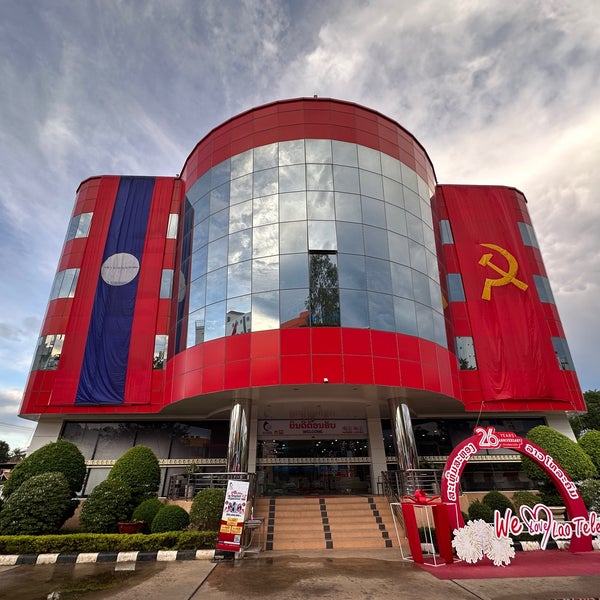Laos Mobile Operators Overview, Market Share, Services, Pricing & Future Outlook
Mobile operators in Laos have been growing rapidly, with more than 10 million mobile subscribers recorded in 2021. The country currently has four major mobile service providers that offer a range of services to customers. In this article, we will provide an overview of the mobile operators in Laos, their market share, services, pricing, network coverage, technologies used, challenges faced, future outlook, and customer satisfaction.

Overview of Mobile Operators in Laos
The four major mobile operators in Laos are Unitel, Lao Telecom (LaoTel), TPlus Laos (formerly Beeline Laos), and ETL Laos. Unitel is the largest mobile operator in the country, followed by LaoTel. TPlus Laos and ETL Laos have smaller market shares, but they still provide competitive services to customers.
Market Share of Laos Mobile Operators
According to a report by the Ministry of Post and Telecommunications, as of the end of 2020, Unitel had the largest market share of 51%, followed by LaoTel at 34%, TPlus Laos with 10%, and ETL Laos with 5%.
Unitel Laos

Unitel is a joint venture between Vietnam’s military-run telecom company Viettel and Lao Asia Telecom. The company was established in 2008 and has become the largest mobile operator in Laos with over 5 million subscribers. Unitel offers a wide range of services including voice and data services, broadband internet, and value-added services such as music, video, and gaming.
Lao Telecom (LaoTel)

Lao Telecom is the oldest and one of the most popular mobile operators in Laos. The company was established in 1996 and has since grown to become the second-largest mobile operator in the country with over 3 million subscribers. LaoTel provides voice and data services, as well as value-added services such as mobile banking and other digital solutions.
TPlus Laos (formerly Beeline Laos)

TPlus Laos, formerly known as Beeline Laos, is a subsidiary of the Russian telecommunications company VimpelCom. The company was established in 2009 and has around 1 million subscribers in Laos. TPlus Laos provides voice and data services, as well as other value-added services such as international roaming and mobile payments.
ETL Laos

ETL Laos, also known as Enterprise of Telecommunications Lao, is a state-owned company established in 2015. The company provides voice and data services to customers in Laos, including internet access and other digital solutions. ETL Laos has a smaller market share compared to other mobile operators in Laos, but it still provides competitive services to customers.
Services offered by Laos Mobile Operators
Laos mobile operators provide a range of services to customers, including voice and data services, SMS, MMS, and other value-added services. One unique service offered by some mobile operators in Laos is the eSIM for tourists. Tourists can now bypass traditional SIM card purchases and use an electronic SIM card on their smartphones to connect to local networks.
Tourists can purchase eSIM for Laos at authorized stores or on reputable websites such as laosesim.com.
Pricing Comparison of Laos Mobile Operators
Pricing for mobile services in Laos varies depending on the operator and the type of service. Generally, pricing for voice and data services is relatively low compared to other countries in the region. The cost of data per gigabyte ranges from $2 to $5, depending on the operator and the plan.
Network Coverage of Laos Mobile Operators
Mobile network coverage in Laos has expanded significantly over the past few years, with most of the major cities and towns having good network coverage. However, network coverage in rural areas is still limited. Unitel has the largest network coverage in the country, followed by LaoTel, TPlus Laos, and ETL Laos.
Technologies used by Laos Mobile Operators
Laos mobile operators use a range of technologies to provide mobile services to customers. The most common technology used is the Global System for Mobile Communications (GSM) standard, which provides voice and data services to customers. Some mobile operators have also started to deploy 4G LTE networks in major cities to provide faster internet speeds to customers.
Challenges Faced by Laos Mobile Operators
Laos mobile operators face several challenges, including infrastructure limitations, regulatory restrictions, and a lack of skilled workforce. Despite these challenges, mobile operators in Laos are still able to provide competitive services to customers and are constantly working to improve their networks and services.
Future Outlook for Laos Mobile Operators
The future outlook for mobile operators in Laos looks positive, with more investment in infrastructure and the deployment of new technologies such as 5G expected in the coming years. The government has also announced plans to increase internet connectivity in rural areas, which will provide more opportunities for mobile operators to expand their services to underserved communities.
Regulations Governing Laos Mobile Operators
Mobile operators in Laos are regulated by the Ministry of Post and Telecommunications. The ministryis responsible for licensing, monitoring, and enforcing regulations related to the provision of mobile services in the country. The government has implemented several regulatory measures aimed at promoting fair competition among mobile operators and protecting the rights of consumers.
Customer Satisfaction with Laos Mobile Operators
Customer satisfaction with mobile operators in Laos varies depending on the operator and the quality of service provided. According to a survey conducted by the Lao National Institute of Tourism and Hospitality, most tourists were satisfied with the eSIM service provided by mobile operators in Laos. However, more needs to be done to improve network coverage in rural areas and enhance the quality of service provided to customers.
Conclusion
Mobile operators in Laos have made significant progress in recent years, with more investment in infrastructure and the deployment of new technologies expected in the coming years. While there are challenges facing mobile operators in Laos, such as infrastructure limitations, regulatory restrictions, and a lack of skilled workforce, they are still able to provide competitive services to customers. With the government’s plans to increase internet connectivity in rural areas, mobile operators will have more opportunities to expand their services to underserved communities.




